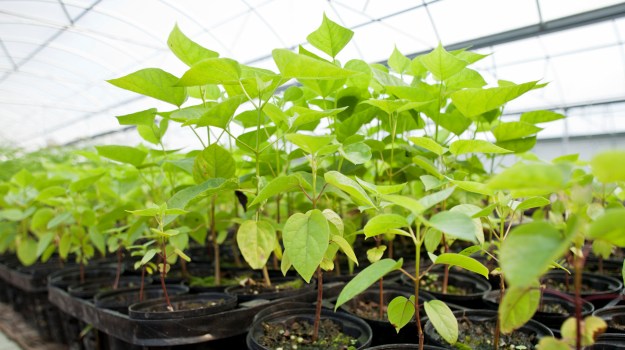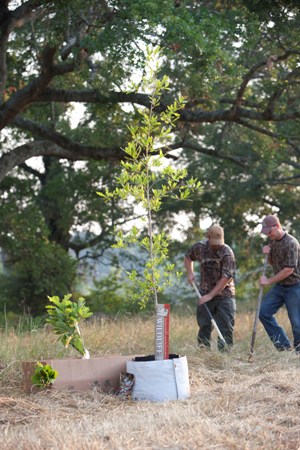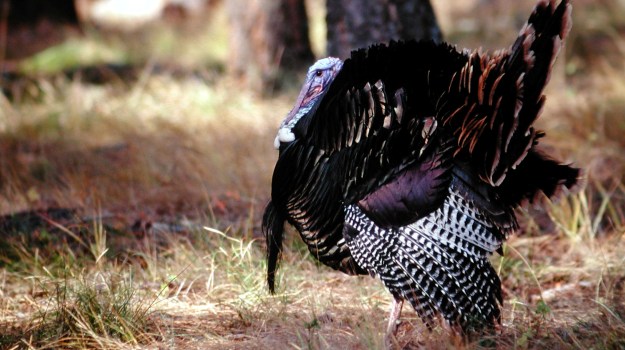
When it comes to fertilizing trees, the ABCs begin with knowing the N-P-K. Trees, like people, are unique, so taking the time to commit to learning about the species is the only way to keep the tree healthy - with the ability to produce shade, mast and beauty.
The first and foremost issue a grower needs to understand when it comes to fertilizers is the N-P-K ratio (the ratio of nitrogen, phosphorus and potassium) in a given fertilizer. Having the knowledge of your soil’s chemistry and the minerals beneath your feet needs to established ahead of time in order for the tree to prosper. Although this may sound complex, a simple soil test will determine the ratio, and reading the label on the fertilizer bag will tell you the proper ratios and application rates of the product you’re purchasing. (Always pay attention to the label!)
For the sapling/seedling, the greatest amounts of nitrogen-based fertilizer should be applied during the early spring and summer (late March through early June); but as the tree matures, several light applications a year are all that’s needed to keep that tree achieving optimal health. Fertilizer application has the greatest benefit when it’s made before new growth begins; whereas, fall fertilization should be made approximately one month after the first killing frost. Many are a bit fearful to fertilize in the late fall, worried that it could cause new growth if a trend of unseasonable warm weather comes along, but it’s a fact that this time period is actually more effective in promoting plant growth than spring applications.
When it comes to the ‘how,’ fertilizer should be spread evenly over the entire root zone by sprinkling it on top of the soil or mulch and then lightly watering. Always remember to spread the fertilizer evenly under the branches, because dumping it in one spot can cause the roots below to burn and die out. Waiting until the foliage is dry is also a necessity so that the fertilizer will not stick and, again, cause burning.
There are many tales about the benefits of organic versus chemical fertilizers, but the fact is that organic fertilizers, being that they’re created from natural resources, bring the most benefits by adding nutrients to the soil and increasing root development. However, being harder to find and more expensive, chemical fertilizers are the most frequently used. These are excellent products, complete with N-P-K, but the benefits to the soil are few.
 Patience is also necessary when growing a tree, and all too often a person will automatically assume that if the tree isn’t doing well - short twig growth, wilting foliage, etc. - then extra fertilizer will solve the problem. Unfortunately, that’s not so. Inadequate soil aeration, adverse climate conditions, incorrect pH - the cause can be many and must be determined before ever turning to fertilizer as the solution.
Patience is also necessary when growing a tree, and all too often a person will automatically assume that if the tree isn’t doing well - short twig growth, wilting foliage, etc. - then extra fertilizer will solve the problem. Unfortunately, that’s not so. Inadequate soil aeration, adverse climate conditions, incorrect pH - the cause can be many and must be determined before ever turning to fertilizer as the solution.
Let there be light! Knowledgeable tree management plans are essential to minimize shade problems; such as, the decline of turf growing under trees as the canopy becomes more and more dense. When it comes to letting the light in, removing trees that offer no benefit to the landscape, or selective pruning of tree limbs, will greatly improve the amount of morning and afternoon sunlight reaching the turf. When it comes to increasing photosynthesis for healthier leaf tissue, a mowing height should always be maintained in those shaded areas, and removing fallen tree leaves will automatically improve the supply of sunlight.
The wealth of fertilizer types and brands can be overwhelming when you go to make a purchase. But there are many products that are incredibly popular that offer complete solutions. Plant BioLogic Tree-Paks provide for easy, convenient planting or supplemental fertilization. These products come in all forms in order to focus on whatever job you’re trying to accomplish. If you wish to improve hunting by attracting deer, there is a specific Whitetail Tree-Pak that includes an assortment of trees specially designed to keep food on the ground throughout the entire season; increasing nutrient content and producing nutritious yields from both mast and fruit trees. The Wild Turkey Tree-Pak includes an assortment of Plant BioLogic Rapid Mast trees specially designed to produce the right amount of tastes to enchant and hold turkeys on the property.
But whether focusing on hunting or improving nature, adding an assortment of trees that produce mast is one of the best ways to attract wildlife. Enhance the yield, increase the beauty of the area, and give back to Planet Earth all at the same time.
Find the best selection of plants for creating and restoring wildlife habitat at nativnurseries.com. Our plant species are hand selected and hand grown with special attention to be sure we provide you with the absolute best Mother Nature has to offer.



























